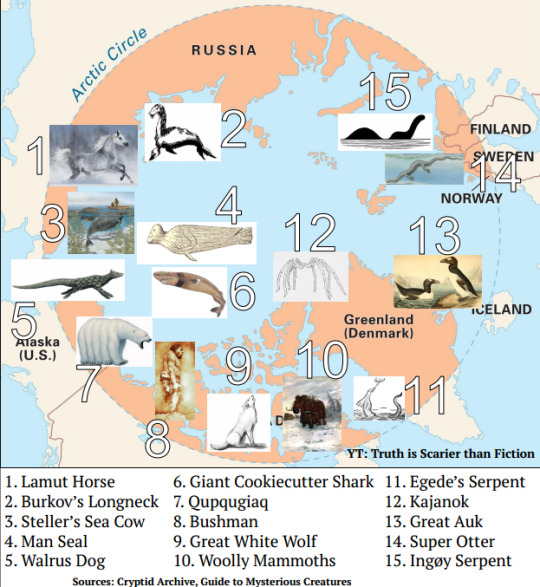Link
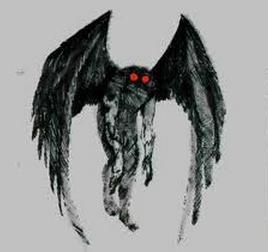
Background: As recorded in John Keel’s seminal book ,The Mothman Prophecies The Mothman sightings began to be reported in 1966. The red-eyed winged creature was dubbed “Mothman” by a newspaper reported, since the “Batman” TV series was at the height of its popularity. Sightings continued and fervor escalated over the following months, coinciding with a bewildering array of strange activity - including precognition, odd prophecies, UFO sightings and encounters with bizarre “Men in Black.” It’s one of the most puzzling and fascinating periods on record of paranormal activity focused in one geographic area. The creature itself has never been explained, although skeptics laughably suggested that it was a mis-sighting of a sand crane.
Description: Approximately seven feet tall; has a wingspan over 10 feet wide; gray, scaly skin; large, red, glowing, and hypnotic eyes; able to take off straight up in flight without flapping its wings; travels up to 100 miles an hour; likes to mutilate or eat large dogs; screeches or squeals like a rodent or electric motor; likes to chase cars; likes to “nest” in remote, unpopulated areas; causes radio and television interference; drawn to, and protective of, small children; has some mind control powers.
Encounter: ”It was shaped like a man, but bigger, said witness Roger Scarberry. “Maybe six and a half or seven feet tall. And it had big wings folded against its back. But it was those eyes that got us. It had two big eyes like automobile reflectors. They were hypnotic. For a minute, we could only stare at it. I couldn’t take my eyes off it.”
186 notes
·
View notes
Text
Taking beastrogen to become a wretched creature
53K notes
·
View notes
Text
me as a therapist: I see what you’re saying. *starts writing something down for you* here, there’s an episode of Naruto that I think would be relevant and extremely healing for you,
29K notes
·
View notes
Photo

schuylerpeck / instagram: hiitssky
5K notes
·
View notes
Photo
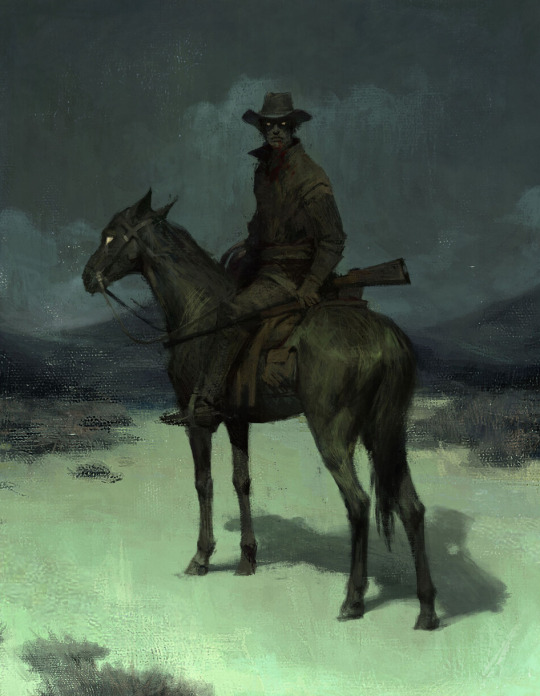

Vampire by Betty Jiang
This artist on Instagram // Facebook // Twitter
63K notes
·
View notes
Photo
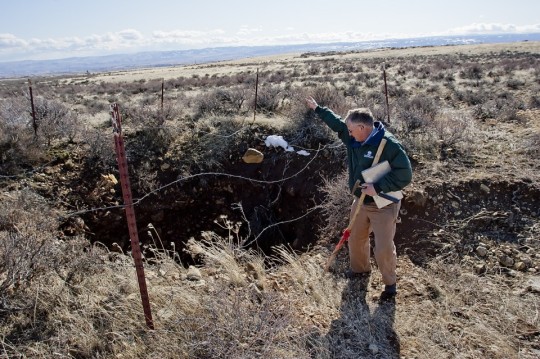
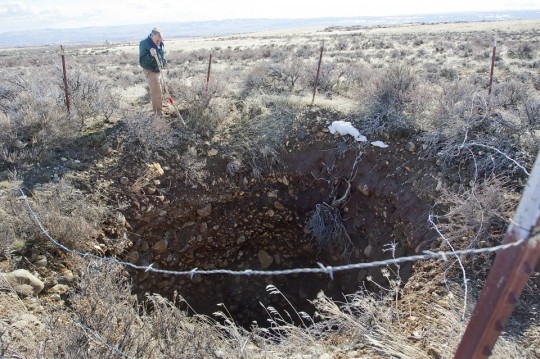
Mel’s Hole
In 1997 a man named Melvin Waters called into the radio show Coast to Coast AM with Art Bell. On the show he made the claim that on his property in Ellensburg Washington (Kittitas County) was a magical bottomless hole.
Mel said he sent down over 15 miles (over 80k feet) of fishing line with a weight attached to the end but was unable to find a bottom which led him to proclaim the hole as bottomless.
He stated that his neighbors mostly used it as a trash dump but some of them would use it as a place to dump their dead pets, only to be horrified when those dead pets would come back to life. He also claimed to have seen UFO activity nearby.
After his segment on the radio show was aired, he claimed that he was blocked from his own property due to some kind of “plane crash” and that he was warned by uniformed officials to not interfere and that if he did, a drug lab could easily be “found” on his property. The same uniformed officials offered to lease his property from him to which he agreed.
Local news reporters who investigated the claims found no public records of anyone named Mel Waters ever residing in, or owning property in Kittitas County
4K notes
·
View notes
Text
nobody is coming to save you. get up
54K notes
·
View notes
Photo

Just on the outskirts of Port Tobacco, Maryland, there is said to be the spirit of a great dog. The Phantom Blue Dog of Rose Hill is said to resemble a mastiff or a tick hound with blue-ish grey fur. As the legend goes, Charles Thomas Sims and his faithful dog drank in a tavern one night, drunkenly and loudly boasting of his wealth in gold. He was slyly led out of the tavern by Henry Hanos who took him to Rose Hill where he was beaten to death by Hanos and his gang. Sims’ loyal dog tried defending his master and ultimately died as well. Hanos then gathered the gold and buried it under a holly tree that was along Rose Hill road. When Hanos went back to retrieve his treasure, he was supposedly frightened away by the ghost of a large blue dog. He suddenly fell ill and died a few days later.
It is said that every February 8th, the dog returns to the spot where he and his owner died, howling mournfully for his lost master. This legend is supposedly Maryland’s oldest, being around since the 1700s.
1K notes
·
View notes
Photo

Asking your werewolf boyfriend for kisses
3K notes
·
View notes
Text
I’m so bored rn I need a violent delight with a violent end
20K notes
·
View notes
Photo


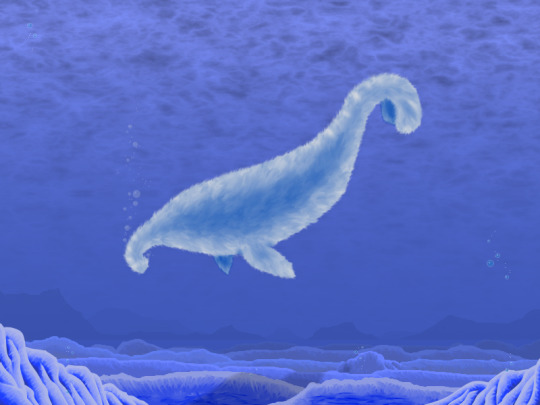
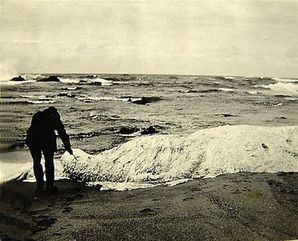
Trunko
Trunko is the nickname for an animal reportedly sighted in Margate, South Africa, on October 25, 1924, according to an article entitled “Fish Like A Polar Bear” published in the December 27, 1924, edition of London's Daily Mail. The animal was reputedly first seen off the coast battling two killer whales, which fought the unusual creature for three hours. It used its tail to attack the whales and reportedly lifted itself out of the water by about 20 feet. The creature reputedly washed up on Margate Beach but despite being there for 10 days, no scientist ever investigated the carcass while it was beached, so no reliable description has been published, and until September 2010 it was assumed that no photographs of it had ever been published. Some people who have never been identified were reported to have described the animal as possessing snowy-white fur, an elephantine trunk, a lobster-like tail, and a carcass devoid of blood. While it was beached, the animal was measured by beach-goers and turned out to be 47 ft (14 m) in length, 10 ft (3 m) wide, and 5 ft (1.5 m) high, with the trunk’s length being 5 ft (1.5 m), the trunk’s diameter 14 in (36 cm), the tail 10 ft (3 m), and the fur being 8 in (20 cm) long. The trunk was said to be attached directly to the animal’s torso, as no head was visible on the carcass.
http://cryptidz.wikia.com/wiki/Trunko
112 notes
·
View notes
Text
It’s time for some facts about coelacanths!
I said I’d do this a while ago and I forgot so I’m doing it now because coelacanths are the best and more people should know how cool they are! I did not mean for this post to turn out so long but I promise the facts are very good (how could they not be when coelacanths are so cool)
There are two living species of coelacanth, Latimeria chalumnae, the West Indian Ocean coelacanth, and Latimeria menadoensis, the Indonesian coelacanth.
This is a West Indian Ocean coelacanth, they’re dark blue and each one has a unique pattern of white spots:
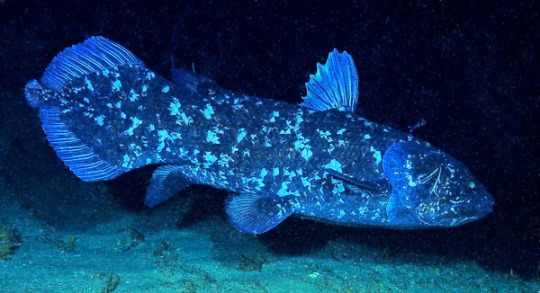
And this is an Indonesian coelacanth:
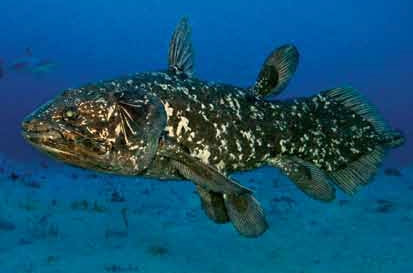
Indonesian coelacanths are noticeably different from West Indian Ocean coelacanths due to their background colouration being more of a greyish brown rather than blue. Their spots also appear more gold due to light reflecting off them :)

Coelacanths are old! The oldest coelacanth fossils date to more than 400 million years ago, and they were thought to have gone extinct about 66 million years ago, until 1938 when one was accidentally caught off the coast of South Africa and found by Marjorie Courtenay-Latimer.
Latimer contacted her friend, the ichthyologist J. L. B. Smith, who confirmed the fish was a coelacanth! Smith was given the honor of naming the fish, and he named it Latimeria after Marjorie Courtenay-Latimer. (Shown below with the coelacanth she found)
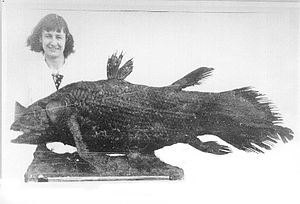
After their discovery, people mistakenly described them as the 'missing link' thanks to their leg-like fins, and this myth persisted thanks to the interesting way coelacanths swim, which appears almost like crawling.
Even today they are sometimes called 'living fossils' because of how little they have changed over millions of years. This label is not technically accurate since they are still evolving, but they do have one of the slowest evolving genomes in the animal kingdom, probably because they're already very well adapted to their environment and they don't have a lot of selection pressures affecting them.
Coelacanths can be more than six feet (up to two meters) long, weigh up to 200 pounds, and are estimated to be able to live up to 100 years! They are covered in hard, armor-like rough scales that are themselves covered in tiny spikes called denticles, which help protect coelacanths from rocks and other fish that might want to hurt them.
They also give birth to live young in litters of 10-25 pups and new research suggests they can be pregnant for as long as 5 years! This would mean that they beat out the frilled shark as the record holder for the longest gestation period by more than a year!
(Unfortunately this means that the birth rate for coelacanths is very low, which doesn't help their small populations. The West Indian Ocean coelacanth is critically endangered, and the Indonesian coelacanth is classified as threatened :( )
Coelacanths are what’s called a lobe-finned fish! This means that their fins look more like stumpy appendages than skin that's been stretched over flexible spines. Their closest relatives are lungfish, and that actually means they’re more closely related to us humans than they are to ray-finned fish like tuna or goldfish! Hell yeah!
Coelacanths live in the "twilight zone" which is between 500-800 feet deep. It’s hard to study coelacanths in their natural habitat for extended periods, but they never survive trips to the surface due to the pressure change, so a lot about their behavior is still pretty unknown.
Coelacanths are generally slow moving, nocturnal drift hunters, which means they tend to sort of just eat whatever fish cross their path, but they have a lot of interesting adaptations that make their particular method of drift hunting unique.
First, coelacanths have a hinge in their skull, called an intracranial joint, that lets them open their mouth more than would be possible with just their jaw.
Second, they display an interesting behavior when feeding, where they will float with their head pointed down, almost like they're doing a headstand. They do this while floating along catching prey, and it seems to be working out for them.
Third, coelacanths have a sixth sense! They have an organ in their snout called a rostral organ that functions as an electrosensor to help locate their prey by detecting the electrical signals given off by other animals!
They truly are a unique animal. They even have a caudal (tail) fin with three lobes instead of the two-lobed tail that is common in many fish.
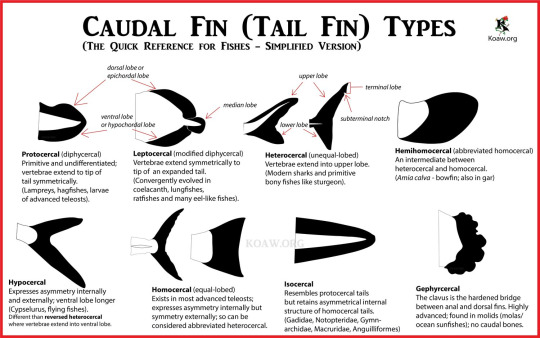
(source for this diagram)
And here you can see the three-lobed caudal fin on a real coelacanth (and also you can have a reminder of how big these guys are. They are not little fish)
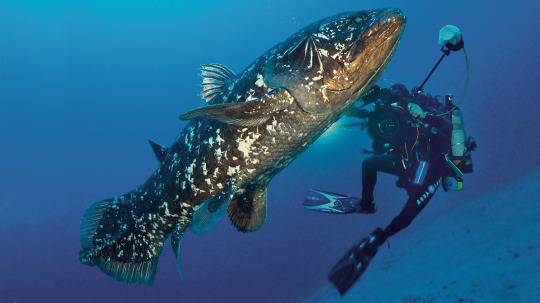
It seems coelacanths also have more similarities to their relatives, the lungfish, than we used to think. It turns out coelacanths have a vestigial lung! They have a lung that they don’t use anymore! It’s all shrivelled and wrinkly but it’s there!
They also have a spiral shaped intestine! Some sharks have this too, it’s basically shaped like a spiral to increase surface area for maximum nutrient absorption.
Another way they differ from many other fish is their swim bladder, which is how they control their buoyancy! In most fish the swim bladder is filled with gas, but coelacanths' swim bladders are filled with oil and fat instead!
Coelacanths are also the proud owners of notochords! They don’t have backbones, they’re so old they were around before animals had backbones and they just never got one, they still have their oil filled notochords! Don't fix it if it's not broken, right?
Also, just in case you were wondering, they would not taste good, they are full of all sorts of oils (as mentioned in the above two facts), plus they do have very hard and rough scales. (But also even if they did taste good it would be a bad idea to eat them since there aren't a lot of them left and it's generally considered bad to eat endangered species)
Well, that's the end of my coelacanth facts, so if you took the time to read this whole long post that was just me talking about my favorite animal, thanks for sticking around! Here, have some bonus content!
Coelacanths make a guest appearance in Atlantis: the Lost Empire!

I like seeing them in the movie so I ignore they weren’t discovered when the film takes place in 1914 (easy to ignore) and that they wouldn’t survive the trip to the surface due to the immense pressure change (less easy to ignore but I do it anyway) :)
My friend @thelunarbee even crocheted me one for a Christmas present :’) his name is Milo and I love him so so much
I also drew a coelacanth a while ago, here's where I posted it if you want to see it :) (I mean, I draw coelacanths all the time but those are mostly doodles, this one I actually put effort into)
Alright that's all I have to say, but I hope you liked the coelacanth facts and remember, if coelacanths can survive for 400 million years, you can make it through today. Be kind to yourself :)
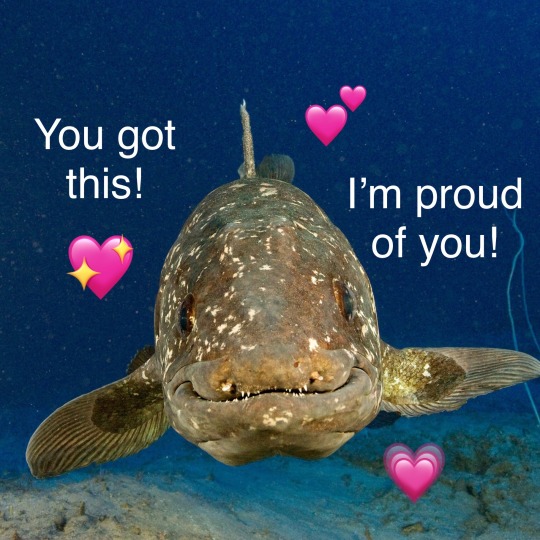
521 notes
·
View notes
Photo

THE SKY WHERE MANTELL FELL - Franklin, Kentucky. On the afternoon of January 7th, 1948, students and teachers standing in front of the Lake Spring Community School - located here at Steele Road and Lake Spring Road - looked in this direction and observed a single-prop airplane spiral out of the sky, explode into pieces in mid-air, and fall in a fiery crash onto the Phillips Farm on Witt Road, just beyond the center tree line. The plane was an F-51D Mustang piloted by Franklin-born Captain Thomas F. Mantell, Jr. (C Flight, 165th Fighter Squadron Kentucky Air National Guard) and had just had a high-altitude engagement with a large, silvery Unidentified Flying Object that was tracked traversing the Kentucky skies. Although the unexplained accident was a likely result of misidentification and a lack of oxygen, the deadly “Mantell Encounter” still remains a true mystery and a famous case in the annals of UFO history and lore. Not far from this spot, a historical monument commemorating the event stands as a tribute to Captain Mantell. Mantell spent only two days of his life in Franklin - the day of his birth and the day of his encounter with The Unknown. Photo by Michael Huntington - May, 2015. @Huntington_Strange_Travels #StrangeTravels #MichaelHuntington #HuntingtonFamily #HuntingtonAdventures #UFOTravel #ThomasFMantell #MantellUFOEncounter #1948MantellCrash #UFO #UFOs #UFOHistory #FamousUFOCase #UFOMarker #LakeSpringBaptistChurch #LakeSpringSchoolFranklinKentucky #FranklinKentucky (at Franklin, Kentucky)
https://www.instagram.com/p/BukWClvlkqK/?igshid=NGJjMDIxMWI=
#aliens#i do not like aliens btw however i do like this story#cuz logically? coulda been another countrys plane or some shit
10 notes
·
View notes
Text

one of the few photos of the now-extinct passenger pigeon. an abundant north american species famous for completely covering the sky for minutes at a time when large flocks took flight, the species gradually suffered from population declines largely due to overhunting. it is believed by some that this species’ niche was largely filled by the introduced, invasive rock dove (feral pigeon).
796 notes
·
View notes
Text
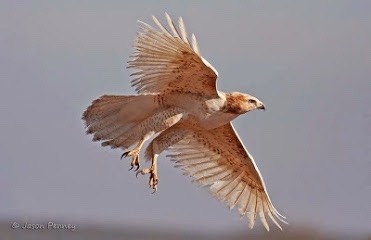
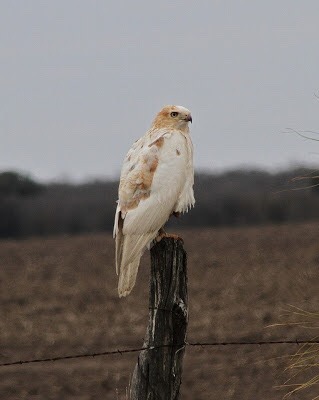
a red-tailed hawk with leucism, spotted in texas. leucistic birds aren’t uncommon but rarely make it to adulthood due to being easy targets for predators and having weaker feathers and eyesight.
source: (x)
1K notes
·
View notes
